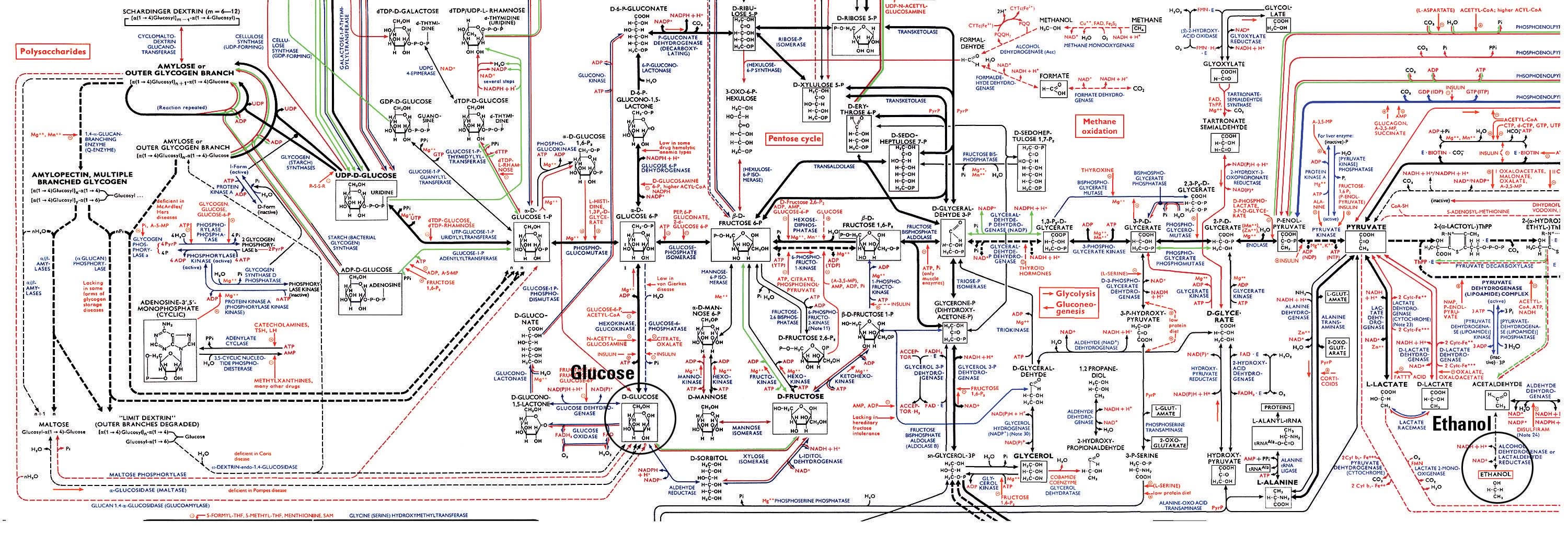Our lab studies metabolic biochemistry in plants and microbes. In other words, we study the processes through which organisms extract, store, and convert energy and chemicals in order to achieve life. In plants, this involves using energy derived from sunlight to convert carbon dioxide and water into sugars, then converting these sugars and a few minerals into all of the chemical structures that make up a plant (e.g. DNA, proteins, lipids, fibers, small molecules, etc.). Chemical conversions, also known as metabolic reactions, are typically carried out by enzymes; a series of metabolic reactions is often referred to as a ‘metabolic pathway’ and all of the metabolic pathways occurring within an organism form a complex ‘metabolic network’. Metabolic biochemist’s create metabolic maps to depict metabolic networks – much like a subway map shows how you can get from one destination to another, metabolic maps show how metabolites can be converted to one another.

Metabolic maps, like the one above, summarize nearly a century of scientific discoveries and are rich in information. Still, they represent only a fraction of the chemical conversions that occur within a cell. This is because maps only show purpose-driven enzyme-catalyzed metabolic reactions and not the mistakes that inevitably occur. In other words, they focus on what goes right and ignore what goes wrong - and there's a lot that can go wrong. Mistakes that occur in metabolism, known as metabolite damage, can occur via spontaneous chemical reactions and enzyme mistakes. Scientists are starting to appreciate the importance of metabolite damage and it is becoming clear that a scarcely-studied army of enzymes – known as metabolite damage repair enzymes – exist to fix these mistakes and allow metabolism to proceed effectively. If we mapped metabolite damage and repair on a metabolic pathway it might look something like below. You can imagine what a metabolic nework would look like if it contained metabolite damage and repair reactions...

Metabolite damage and repair has emerged as a promising field of study – and this is the true focus of research in the Niehaus lab. In addition to discovering roles for genes of unknown function and contributing to our general understanding of biology, research in metabolite damage and repair is important in synthetic biology, human health, stress tolerance, and aging. It is truly an exciting time to be a metabolic biochemist working on this transformational research!